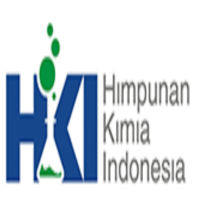PEMANFAATAN BAHAN AJAR BERDASARKAN MULTI LEVEL REPRESENTASI UNTUK MELATIH KEMAMPUAN SISWA MENYELESAIKAN MASALAH KIMIA LARUTAN
Abstract
Keywords
Full Text:
PDFReferences
Anderson, O.W. Kartwohl, D.R. (2010) Kerangka Landasan untuk Pembelajaran, Pangajaran, dan Asesmen (Revisi Taksonomi Bloom). Yogyakarta: Pustaka Pelajar.
Arikunto, S. (2006). Dasar-dasar Evaluasi Pendidikan. Yogyakarta: Bumi Aksara.
Chittleborough Gail and Treagust David F. (2007). The modelling ability of non-major chemistry students and their understanding of the sub-microscopic level. Chemistry Education Research and Practice.
Guzet Buket Y., & Emine A. (2013). Use of multiple representations in developing prese-rvice chemistry teachers’ understanding of the structure of matter. International Journal of environmental & science Education.
Gronlund, N.E. (1977). Construcing Archievment Tes. Second Edition. Englewood Chiff. Princetice-Hall.
Johnstone, A. H. (1991). Why is science difficult to learn? things are seldom what theyseem. Journal of Computer Assisted Learning.
Mujakir, Sri Poedjiastoeti, Rudiana Agustini. (2014). Kemampuan memecahkan masalah berdasarkan multi level representasi (MLR) peserta didik expert dan novice. Surabaya: Makalah Seminar Nasional PPS PGSD UNESA.
Santrock. (2011). Educational Psychology Fifth Edition. New York: McGraw Hill.
Teber, Keith S. (2013). Modelling learners and learning in science Education. Cambridge: Springer.
DOI: http://dx.doi.org/10.22373/lj.v5i2.2839
Refbacks
- There are currently no refbacks.
Copyright (c) 2018 Mujakir Mujakir

This work is licensed under a Creative Commons Attribution 4.0 International License.
INDEXED IN

